Accelerator Division No.1
Accelerator Division No.1 ensures stable and efficient operation of the VBLHEP accelerator complex. The complex includes ion sources, linear accelerators, the Booster, the Nuclotron, the Collider, beam cooling systems, beam transport channels, as well as the infrastructure necessary for its operation. In addition to providing beams for experiments, work is underway to improve the quality of beams, upgrade equipment, and conduct research in the field of accelerator physics. Employees of Accelerator Division No.1 regularly make reports at regional and international conferences, publish scientific and methodological papers, perform educational activities.
Structure of Division:
- Scientific and Experimental Department of Accelerator Systems
- Scientific and Experimental Department of Engineering and Physics Problems of Accelerators
- Scientific and Technical Department of beams
- Scientific and Experimental Department of Injection and Nuclotron Ring
- Scientific and Experimental Department of Radio-Electronic Systems
- Scientific and Engineering Department of Nuclotron Power Supply Systems
- Scientific and Experimental Department of Superconducting Magnets and Technologies
- Scientific Research Cryogenic Department
- NICA Operation Control Centre
- Scientific and Experimental Sector of Beam Cooling
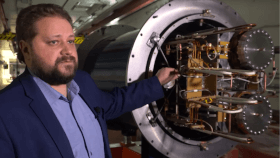
Head of Division No.1
Andrey V. Butenko
tel.: +7 (496) 216-43-91
e-mail: butenko@jinr.ru
Accelerator Division website
(the site is accessible from the JINR’s internal network)
Division No.2 of Physics at the Nuclotron-NICA Accelerator Complex
The main tasks of Division No.2 are performing studies using the Nuclotron internal target station and extracted beams to obtain information on nuclear interactions in the transition area from normal nuclear matter, consisting of nucleons and mesons, to a state where the QCD fundamental degrees of freedom (quarks and gluons) play a dominant role. Experiments using unique beams of polarized deuterons and nucleons are crucial in these studies. They allow obtaining both information on spin structure of short-range correlations (SRC) and methodological results for the development of focal polarimetry at high energies. Another important field of experimental research is the registration and study of properties of exotic states of nuclear matter, such as neutron-excess nuclei, η-nuclei, α-condensate, spinodal phase in multifragmentation processes, and others. An essential part of Division No.2 activities consists of methodological developments and applied research using beams of relativistic nuclei and electrons at the Nuclotron and LINAC-200. Some of these studies underlay non-destructive beam diagnostics, methods for measuring luminosity and polarimetry at the NICA accelerator complex. The Division’s staff also actively participate in international projects at CERN at the SPS and LHC accelerators, and analyzes data obtained on the formation of light nuclear fragments, hypernuclei and antimatter in nucleus-nucleus interactions.
Structure of Division:
- Scientific and Experimental Department of Heavy Ion Physics
- Scientific and Experimental Department of Spin Physics of Low-Nucleon Systems
- Sector of Physics of Strange Quarks in Nuclei
- Scientific and Experimental Department of Theoretical and Methodological support of Projects
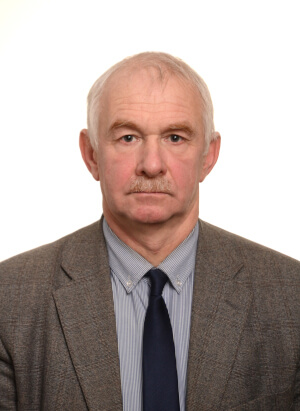
Head of Division No.2
Vladimir P. Ladygin
tel.: +7 (496) 216-39-29
e-mail: vladygin@jinr.ru
Division No.3 of Hadron physics
Within the framework of Division No.3, participants of the major international collaborations conduct their research in the main experiments of the mega-project NICA – BM@N, MPD and SPD. The BM@N Collaboration continues processing experimental data obtained in the collisions of argon and xenon beams with a fixed CsI target at energies up to 3 GeV/nucleon. The MPD Collaboration is preparing for cryogenic tests of the main element of the MPD facility – a large solenoid magnet. The analysis of basic physics processes based on the statistics of simulated events is underway, and the mass production of detector modules is being completed. The SPD team is preparing a presentation of the technical design of its detector.
Structure of Division:
- Scientific and Experimental Department of Multi-Purpose Detector (MPD)
- Scientific and Experimental Department of Baryonic Matter at Nuclotron (BM@N)
- Scientific and Experimental Department of Spin Structure of Hadrons and Rare Processes (SPD)
- Scientific and Experimental Department of Physics of Heavy Ion Collisions at the NICA complex

Head of Division No.3
Alexander S. Sorin
tel.: +7 (496) 216-59-40
email: sorin@jinr.ru
Division No.4 of Physics at Colliding Beams
Employees of Division No.4 actively take part in external experiments at the SPS and LHC (CERN) and at RHIC (Brookhaven). The wide-ranging physics programme includes studies of femtoscopic correlations in nucleus-nucleus collisions, precision measurements within the Standard model (SM), the analysis of electroweak processes, the production of the Higgs boson, the search for physics beyond the SM, including supersymmetric partners of SM particles, as well as light and heavy candidates for Dark Matter particles.
Structure of Division:
- Scientific and Experimental Department of Heavy Ion Physics at RHIC
- Scientific and Experimental Department of Heavy Ion Physics at LHC
- Scientific and Experimental Department of Physics at CMS
- Sector of Physics at ATLAS
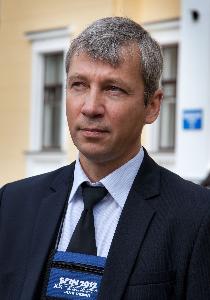
Head of Division No.4
Dmitry V. Peshekhonov
tel.: +7 (496) 216-38-07
e-mail: peshekhonov@jinr.ru
Division No.5 of Scientific and Methodological Research and Innovation
Work of Division No.5 is focused on the implementation of the ARIADNA project – a programme of applied research at the NICA complex. Together with institutes cooperating within the ARIADNA Collaboration, a wide range of research and methodological work is carried out in the field of radiation safety in space, radiation effects in electronics, radiation materials science, radiation biophysics, general radiobiology and related tasks of radiation therapy, as well as work on ADS systems. Employees of Division No.5 participate in the development of elements of the applied research zone at the NICA complex and in the study of radiation effects in high-temperature superconductors, construct tracking systems, perform research using X-ray spectroscopy. Division No.5 coordinates the user programme at the NICA complex in terms of applied research.
Structure of Division:
- Scientific and Methodological Department of Silicon Tracking Systems
- Scientific and Experimental Department of Automation of Physical Research
- Sector of X-ray Spectroscopy
- Sector of Cryophysical Research
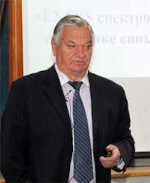
Head of Division No.5
Sergey I. Tyutyunnikov
tel.: +7 (496) 216-46-52,
+7 (496) 216-41-73
e-mail: tsi@jinr.ru
Division No.6 of Chief Engineer
The infrastructure of the VBLHEP site serves the ambitious goals that the Laboratory pursues during the implementation of the mega-science project NICA. Improving the infrastructure that meets the latest technical standards and regulatory requirements, providing it with modern equipment, ensuring stable, safe and high-performance operation of the sophisticated complex are the tasks for Chief Engineer’s services.
Structure of Division:
- Construction Department
- Experimental Production Workshop
- Group for Commissioning Facilities and Obtaining Permits
- Service for Automation of VBLHEP Process Control Systems
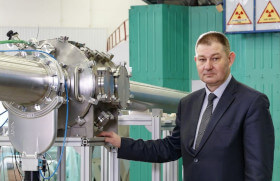
Head of Division No.6
Sergey Yu. Anisimov
tel.: +7 (496) 216-39-34
e-mail: anisimov_s@jinr.ru
